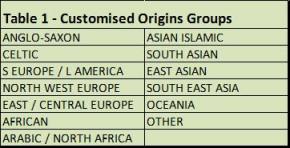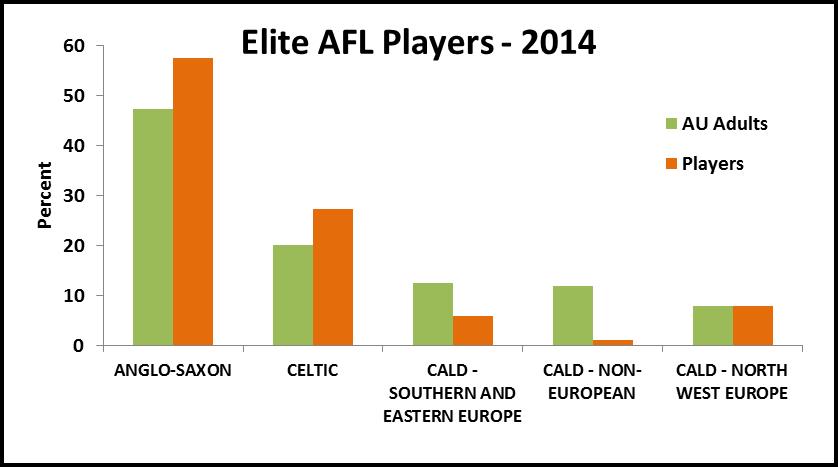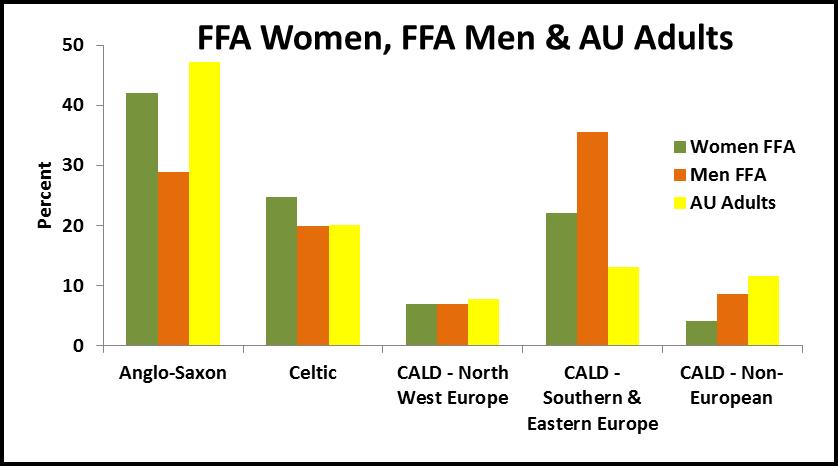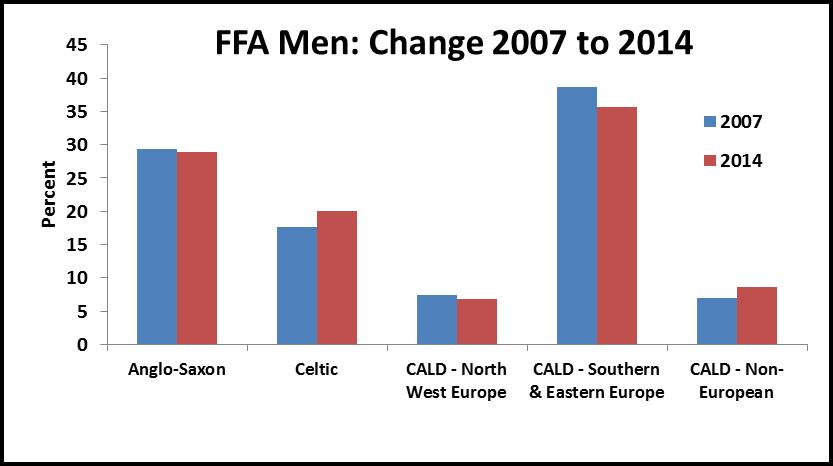Measuring Cultural Diversity
The challenge of collecting appropriate data on cultural diversity to support effective reporting is discussed in a previous edition of OriginsInsight .
In short, we contend that there are great efficiencies and practical advantages in using first and family name combinations to measure cultural diversity – and with lower error rates than comparable methods. OriginsInfo’s independent name analysis methodology infers the most likely cultural origin of each name combination.
With the notable exception of Indigenous Australians2, we argue that this provides the best representation of multiculturalism and an evidence-base that is more than adequate for measuring the status of diversity. Solid evidence is more likely to secure government funding and commercial sponsorship where there mutual objectives of engagement with, and exposure to, key cultural segments.
Using publicly-available sources, we compiled a data set from ‘A’ League club player lists, including non- ‘A’ League clubs who participated in the 2014 inaugural FFA Cup competition and ‘W’ League clubs for women footballers – totalling 625 players.
For practical purposes and to ensure statistical reliability, we grouped the 257 Origins categories into a smaller number of groups – Anglo-Saxon, Celtic, North West European, Southern and Eastern European, CALD3 – Non-European.
We compared the proportion of FFA players in those categories with the proportion of the Australian adult population in the same categories. We also compared the current picture with the results we found when we conducted similar research in 2007.
To provide more detail, the 257 Origins codes have been aggregated to the 12 groups (plus ‘Other’) indicated in Table 1.

Where it is statistically valid to do so, we also drill-down to the components of the 12 groups for greater precision and insight.
Results
As with the AFL players, as highlighted in our preceding OriginsInsight article the results give clear evidence of skewed participation in FFA at the elite level. However, this skew is very different. Whereas AFL players continue to be predominantly Anglo-Celtic in origin, FFA players (men and women) are much more diverse. While players of Celtic heritage are broadly in line with the national picture, Anglo-Saxon players are considerably under-represented, making up just 32% of the FFA list (AFL = 57.5%, AU Adults = 47.3%).

Part of the explanation for this skew is that the FFA imports talent to boost standards in the game and ensure its successful development. Stand-out representation occurs from Southern and Eastern Europe, including Italian, Greek, Spanish, Serbian, Croatian, Czech and some Latin American. Although with smaller numbers, Arabic / North Africa and Africa are also over-represented. Among the under-represented groups are people of East and South Asian heritage.
Reflecting FFA’s poor success in attracting indigenous Australians, in 2009 the FFA set an ambitious target of achieving five per cent of players from such a background. Only two players – Jade North and Travis Dodd – currently acknowledge indigenous descent.



